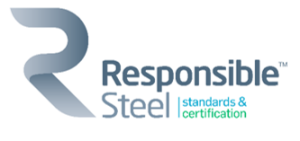Beige Book shows slight economic growth across US
Economic growth was modest, at best, from April through early May in most economic districts observed by the Federal Reserve.
Economic growth was modest, at best, from April through early May in most economic districts observed by the Federal Reserve.
S drill rig activity held steady last week, remaining near two-year lows according to the latest update from Baker Hughes
Steel sheet prices across most regions of the world were little changed this week. European buyers remain cautious regarding their outlook towards end-use demand and largely remained out of the market. A similar trend was seen across Asia, although skepticism on real estate stimulus measures in China led to w/w price falls. In the US, […]

Week over week, the futures curve saw minimal change.

Earlier this week, SMU polled steel buyers on an array of topics, ranging from market prices, demand, and inventories to imports and evolving market chatter.

The chatter about the June ferrous scrap market has been noticeably muted as we come off the Memorial Day weekend.

Sheet prices slipped again this week on a combination of moderate demand, increased imports, and higher import volumes.
Let's take a collective deep breath ::in:: and ::out::... And we're back. But where exactly are we? Are steel prices going up or down? Is demand really decelerating or is it an illusion? How is the market navigating the new mill pricing mechanisms?
Prices for galvanized products have fallen from last month, and many market participants expect tags to continue their descent or at best remain flat in the month ahead.

The Biden administration recently announced tariffs on several products from China, including steel and aluminum. There has been much rejoicing over this move and there has been a great deal of support from the steel industry.
Nucor’s Consumer Spot Price (CSP), a legitimate mill offer price, is a potential disruptor to North American steel sheet commercial and procurement strategies. We will dive into the details of what we think the CSP is and why we believe it is a potential disruption to how the North American sheet market operates.
US drill rig activity eased further last week, receding to levels last seen at the start of 2022 according to the latest update from Baker Hughes
Steel Market Update’s Steel Demand Index fell five points to a 12-month low and moving further into contraction territory, according to our latest survey data.

Why have steel emissions policies forgotten about recycling? The short answer is that they haven’t. ResponsibleSteel was recently characterized in an article featured in the SMU Executive Newsletter as advocating for steel emissions policies which “discourage recycling.” In fact, ResponsibleSteel sees recycled scrap as playing a critical role in driving steel decarbonization. Recent revisions to […]
Here’s something I didn’t expect to see this week: SMU’s Current Buyers’ Sentiment Index dropped to its lowest point since August 2020.

Hot rolled buyers found mills less willing to negotiate spot pricing this week, while other products SMU tracks were mixed, according to our most recent survey data.

Lead times on most steel products tracked by SMU held steady or contracted this week compared to two weeks earlier, according to our latest market survey.

Steel prices eased for both sheet and plate products this week, according to our latest canvass of the market
The CRU US Midwest hot-rolled (HR) coil index is a dominant and established price benchmark in the US. Many steel-buying contracts are linked to ‘the CRU,’ as it’s commonly called. But how does it work?
Sometimes even in a bit of chaos there is complacency. And it seems that since March 2020, “a bit of chaos” has been the order of the day. That means in the world at large, and in steel specifically.
Drilling activity ticked up in the US but declined in Canada during the week ended May 17, according to the latest release from Baker Hughes.
American Heavy Plates is planning an expansion of its processing operations in Ohio.
President Biden announced an increase in tariffs this week on Chinese EVs, semiconductors, batteries, solar cells, steel, and aluminum.

Roughly halfway through Q2, flatbed rates are holding firm, currently showing no change from April to May and a slight increase quarter-over-quarter (q/q).
The recent decline in US hot-rolled (HR) coil and longs prices has further restricted demand for imported material. Despite the decline in US sheet prices, CR coil and HDG imports remain attractive. While demand for imports of longs products has been limited, buyers have increased imports of wire products to avoid wire rods’ higher tariffs. […]

Earlier this month, steelmakers entered the scrap market at mixed pricing. The prevailing price for obsolescent grades fell $20 per gross ton (gt). However, some notable districts decided to only drop $10/gt.
SMU had the pleasure of attending the American Iron and Steel Institute's (AISI's) annual general meeting in Washington this week. It was a slow week in our nation's capital, so we were able to take a leisurely stroll around the National Mall and take in the sights. Just kidding. In fact, the meeting coincided with significant trade actions announced by the Biden administration. It included, among other things, additional tariffs on Chinese steel and aluminum.

Veteran StoneX futures broker Spencer Johnson will be the featured speaker on the next SMU Community Chat on Wednesday, May 29, at 11 am ET. You can register here. Note that the live webinar is free for all to attend. A recording will be available only to SMU members.
Domestic scrap prices this month are flat for prime material, but down for HMS and shredded, scrap sources told SMU.
SMU surveyed our market contacts this week about steel prices, demand, and the overall marketplace. Below are some of the buyers' responses in their own words to help you get a feel for current and future market conditions. Demand is a big topic of discussion currently. Is it steady, falling, or on the upswing with summer construction heating up? As you can see from the answers below, it depends on who you ask. One buyer’s response sums it up pretty well: “I still see the marketplace as soft/stable with some segments busy, while others tread water.”